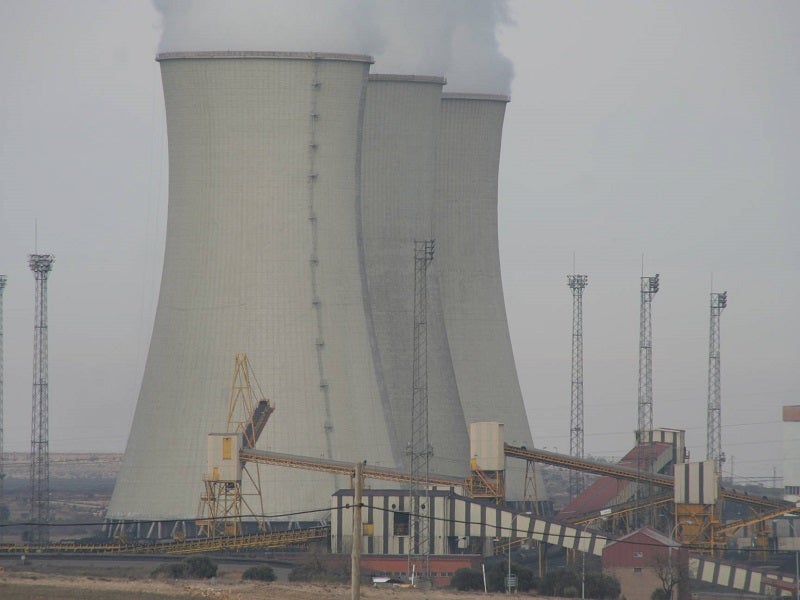Teruel thermal power plant is located in the Aragon region of eastern Spain. Owned and operated by utility company Endesa, the plant has three 350MW capacity units.
The coal-fired thermal power plant was built after the oil crisis of the 1970s to use black lignite from the Teruel mining basin of the Aragon region. It was commissioned between 1979 and 1980.
The power plant is now being decommissioned and will be replaced by a solar-photovoltaic renewable power plant. The strategic decommissioning plan is part of Spain’s commitment to make the country carbon-free by 2050.
Endesa complied with the resolution and submitted a request for decommissioning in December 2018, which was approved in September 2019. The company is also decommissioning its Compostilla thermal power plant located in Cubillos del Sil, Leon province. The decommissioning of both the plants is expected to take four to five years.
Teruel thermal power plant location
The Teruel thermal power plant is spread across an area of 532.3ha, at an altitude of 600m above sea level. It is located in the Teruel province in the Andorra town of the Aragon region.
The plant is accessible through the A-1407 regional road, which connects it with the Calanda municipality.
Teruel thermal power plant make-up
Unit 1 and 2 of the plant were commissioned in 1979, while Unit 3 was commissioned in 1980. Each unit of the thermal power plant comprises a Foster Wheeler boiler, a Mitsubishi Heavy Industries turbogenerator, cooling tower, electrostatic precipitators and desulfurisation units, which processes the exhaust gases from the precipitators.
The plant also comprises of coal storage parks, coal crushing buildings, coal transfer towers, electric carbon buildings, sampling towers, scales, coal hoppers, galleries, and carbon transport belts and various carbon buildings.
The flue gas stack or chimney of the plant is 343m high and helps in the better discharge of gas emissions. The power plant is designed to treat surplus water from the plant operation (cooling tower bleed) for reuse in the desulphurisation process.
The power plant underwent strategic retrofit upgrades through the years including filter upgrades, modifications to desulphurisation scrubbers and installation of Mitsubishi’s wet limestone flue-gas desulfurisation (FGD) process.
New burners emitting low levels of nitrogen oxide were installed in Unit 3 of the power plant in 2012. Further, a new holding tank at the flue gas desulphurisation facilities was commissioned.
The power plant facility uses pulverised bituminous lignite or brown coal as the primary fuel. The coal was procured from a mining basin near to Samper de Calanda located approximately 12km away through a railway line.
Teruel thermal power plant decommissioning details
The decommissioning of the Teruel thermal power plant will take place in seven zones differentiated based on functionality. Zone one includes the turbines and water treatment areas, while zone two includes the boilers and related equipment. Zone three includes the gas desulfurisation plants and associated facilities and zone four includes the chimney and cooling towers.
Zone five includes the coal park and related facilities, zone six includes the general facilities such as warehouses, ash silos, parking lots, and limestone reception areas, while zone seven includes the interior railway line and other associated structures.
Future plans for Teruel thermal power plant site
Endesa is planning to develop renewable energy projects with a total capacity of 1.725GW at the Andorra plant site. The total capacity will include 1,585MW of photovoltaic (PV) solar power plants and 140MW of wind farms. A battery storage capacity of 160MW will also be installed at the site.
The capacity will be developed over three phases with the first phase expected to commence in January 2021. The first phase will add a 50MW photovoltaic park, which is expected to be completed in 2022. Endesa submitted an application for development of the first phase in April 2020.
The second phase will add 235MW photovoltaic solar capacity along with 54.3MW of battery storage. It is expected to be undertaken between March 2022 and June 2023.
The third phase will include 1.3GW of photovoltaic solar capacity, 90MW of wind power and 105MW of battery storage. It is expected to be executed between May 2023 and early 2026.
Contractors involved
Hadek, a chimney and ductwork protection equipment company, supplied its Pennguard™ block lining system, an acid-resistant for the FGD outlet ducts and chimneys of the power plant.
Ditecsa provided maintenance services for the power plant between 2015 and 2017.
INITEC Energía performed basic and detail engineering of the desulfurisation systems and also supervised the construction.
Empresarios Agrupados designed fuel gas ducts of the desulphurisation systems of the power plant, while IDOM provided owner’s engineering services.




